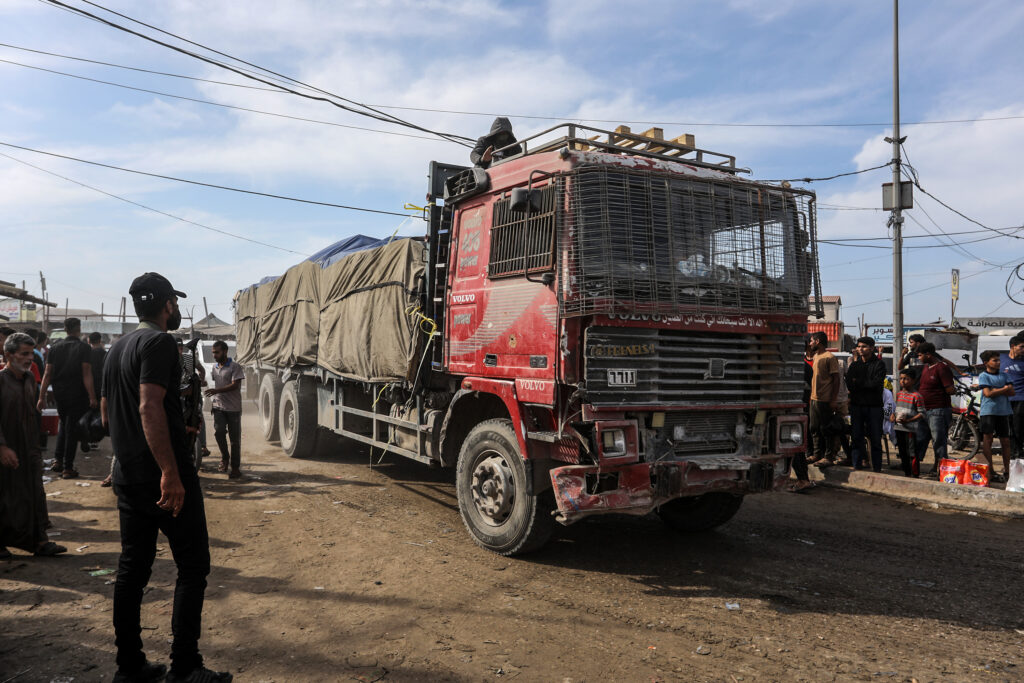The genocide lie: What is really happening in Gaza
There is no genocide in Gaza. What followed the Hamas-led terrorist attacks in southern Israel on Oct. 7, 2023, was a military response by Israel aimed at dismantling the group responsible. It was the logical result of attacking a sovereign state and using civilians as human shields.
The accusation that Israel is committing genocide in the Palestinian enclave has become a popular slogan among Israel’s critics and far too many hostile governments ever since that Black Shabbat. It’s repeated in protests, in the media and even in international courtrooms. But slogans are not evidence, and repeating a falsehood again and again doesn’t make it true.
Genocide has a specific legal definition. According to the 1948 Genocide Convention, it refers to acts committed with the intent to destroy a national, ethnic, racial or religious group in whole or in part. Not simply killing. Not even killing large numbers of civilians. Intent is essential, and there is no credible evidence that Israel intends to eliminate the Palestinian people.
Israel’s stated goal has been the elimination of Hamas, a terrorist organization that has ruled Gaza for nearly 20 years and concentrated on attacking Israeli families ever since. This is not speculation. It is backed by years of rocket attacks, terror tunnel construction, hostage-taking and open calls for Israel’s destruction. Hamas is a legitimate military target by any standard of warfare. It is a U.S.-designated Foreign Terrorist Organization.
Hamas was not imposed on the civilian population in Gaza by force. It was elected in 2006 and never removed. Its rule has continued with the support or acquiescence of much of the population. After the Oct. 7 massacre, many Gazans were seen celebrating. Crowds cheered as hostages were dragged into the Strip. There were no mass protests against the attack. No significant internal resistance to the regime.
Gaza is not an occupied territory. It is a self-governing entity that chose—and stood by—the group responsible for triggering the war.

The civilian death toll is often used as evidence of genocide. But numbers alone don’t prove intent. And in Gaza’s case, they don’t even support the claim of mass extermination. Before the war, Gaza’s population stood at roughly 2.1 million. As of 2025, it has dropped by around 6%—a number that includes those killed, missing or displaced. That figure also reflects large-scale evacuations.
And the source of those casualty numbers—Gaza’s Health Ministry—is entirely controlled by Hamas. It is not an independent agency. It operates under Hamas authority, uses Hamas-provided data, and has every incentive to inflate numbers and blur the line between militants and civilians. Its claims should be treated as propaganda, not fact.
Egypt has confirmed that more than 100,000 Gazans crossed its border since October 2023. The World Health Organization reports nearly 5,000 medical patients were evacuated, most with companions. Israeli media reports that about 36,000 Gazans have left for third countries like Jordan, the United Arab Emirates and parts of Europe.
In a genocide, civilians are not permitted to flee. Corridors are not opened. Hostile states do not coordinate evacuations. But in Gaza, tens of thousands have left. Many more were repeatedly warned to evacuate combat zones. This is not what genocide looks like.
Moreover, the Gaza population still numbers in the millions. There is no plan to erase them. There is no forced sterilization, no ethnic cleansing campaign, no effort to eliminate their identity or culture. What there was, before the current ceasefire, was a military operation aimed at destroying a terrorist regime hiding among civilians.
Hamas deliberately operates from hospitals, mosques and homes—not because it has no choice, but because it understands Western media and politics. Every civilian death is a tool. Every destroyed building is a headline. This is intentional, and it’s effective. Accusations of genocide are the payoff.
The legal and moral absurdity of this claim is compounded by the fact that Gaza’s suffering is not a one-sided tragedy; it is a consequence of actions that derive from the Strip. It is a direct result of supporting, harboring and celebrating a group committed to endless war. Responsibility matters. Choices have consequences.
The misuse of the term “genocide” is not harmless. It distorts international law, insults the victims of real genocides, especially Jews murdered in the Holocaust, and fuels further conflict. It gives cover to terrorist groups who understand that hiding behind civilians earns them global sympathy.
This is not a genocide. It is a war. And like all wars, it ends when one side is defeated. If Gazans truly want to avoid further suffering, the path is not through protest slogans or legal theatrics; it’s through cutting ties with Hamas and rejecting its vision of perpetual violence.
Anything less is just blaming others for a war they helped start by electing Hamas and supporting it.
Moshe Phillips is the national chairman of Americans For A Safe Israel (www.AFSI.org), a leading pro-Israel advocacy and education organization.
** This article was originally published on JNS.org and shared with us by the author.




